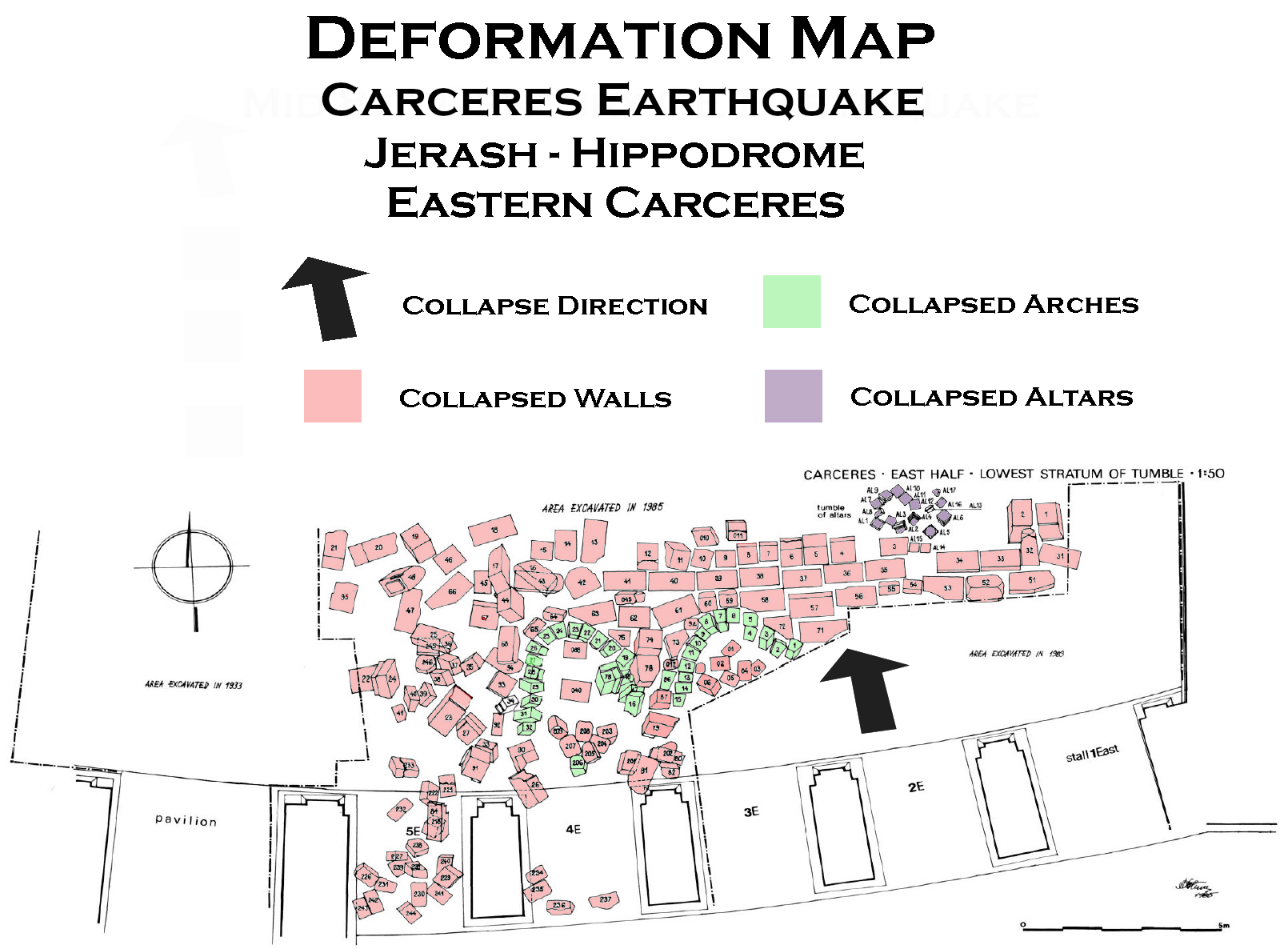Carceres Earthquake

Ostrasz and Kehrberg-Ostrasz (2020:27–28)
documented extensive structural collapse at the eastern
carceres (stalls 1E–5E)
of the Jerash Hippodrome. Stone blocks fell in a curved,
northward arc onto the arena,
with larger stones found farther from their source—evidence of a violent,
forward-leaning failure. The point of detachment, about 2 m above
ground level, formed a structural hinge where rotation preceded
collapse. The masonry, composed of faced stone around a rubble core,
was already weakened by erosion, making it seismically
vulnerable. The western
carceres (stalls 1W–5W)
also collapsed to the north, albeit in a less mechanically diagnostic fashion.
Taken together, these patterns indicate a general south-to-north
collapse orientation, which may point to an epicenter located to the
north
(Ostrasz and Kehrberg-Ostrasz 2020:31–32). This accords with
the NE-oriented column fall in the
Church of Bishop Isaiah and the northerly column fall observed in
the eastern half of the
Church of Saint Theodore, both attributed to the same earthquake.
Additional archaeoseismic indicators were identified in the
cavea, where collapse
debris contained seat stones,
voussoirs, and a monolithic
column broken into three pieces along with a shattered
capital
(Ostrasz 1989:133–135).
The combined structural evidence indicates sudden failure consistent
with strong seismic shaking rather than gradual decay or
deliberate dismantling.
Dating of the destruction is provided by finds sealed beneath the
tumble in the area of the carceres.
Ceramic assemblages span the 1st–8th centuries CE, with the latest
material firmly Umayyad, while a coin gives a terminus post quem
in the first half of the 8th century
(Ostrasz and Kehrberg-Ostrasz 2020:33).
The absence of later deposits supports destruction and abandonment
following the 749 CE Sabbatical Year Quake.
At the same time, the neighboring
Church of Bishop Marianos also
collapsed, its sealed coins dated to the early 8th century.
Ostrasz concluded that both buildings were destroyed in the same
seismic event, making the Jerash Hippodrome one of the clearest
archaeological testimonies of the 749 CE Sabbatical Year Earthquakes
in the city
(Ostrasz 1989:138).


